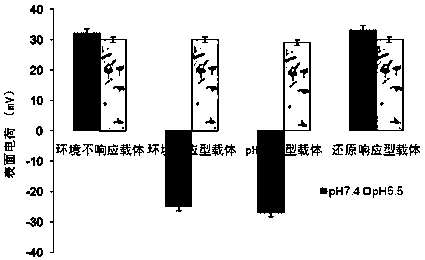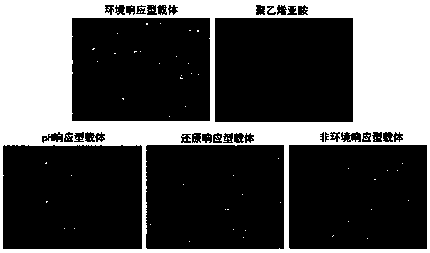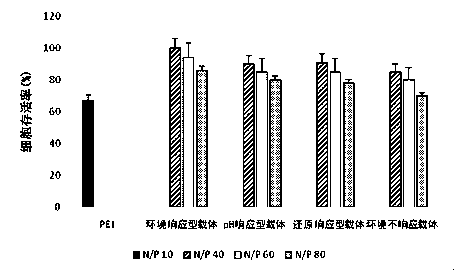Environment-responsive peptide-containing dendrimer lipid material and its preparation method and application
An environment-responsive, dendrimer technology, applied in the field of biomedical materials, can solve the problems of over-packaging of genetic material, high cytotoxicity and poor effect.
- Summary
- Abstract
- Description
- Claims
- Application Information
AI Technical Summary
Problems solved by technology
Method used
Image
Examples
Embodiment 1
[0070] (1) Use divergence method or convergence method or divergence-convergence method to synthesize more than two generations of dendrimers (refer to the method described in the patent literature with publication number CN 103554923A), or use commercially available dendrimers molecular;
[0071] (2) Carry out end group modification on the periphery of the dendritic molecule, and graft a large number of amino groups and / or guanidine groups on the periphery. When lysine or arginine or histidine is selected as the repeating unit of the dendrimer, the above-mentioned end group modification step is not required;
[0072] (3) Protect the peripheral functional groups of the resulting dendrimers containing amino groups and / or guanidino groups, and only expose one or two functional groups at one end, and then pass a reduction-sensitive disulfide bond or diselenide on the functional groups The bond connects the hydrophobic group;
[0073] (4) Removing the protecting groups of the am...
Embodiment 2
[0079] Gene carrier preparation scheme 1:
[0080] (1) Dissolve plasmid DNA or RNA in sterile HBG buffer solution (20 mmol of 4-hydroxyethylpiperazineethanesulfonic acid, 5% glucose) to prepare a 0.1 mg / mL gene solution (denoted as solution A); the environment-responsive lipid material prepared in Example 1 (preferably the lipid material shown in Formula 1) was added to the HBG buffer solution by ethanol injection, and prepared into a 0.1-10 mg / mL self-assembly solution , solution B;
[0081] (2) Mix the solution B obtained in the above steps with the gene solution, and incubate at room temperature for 20 minutes to obtain a binary complex, in which the gene is bound to the periphery of the self-assembly through electrostatic adsorption. The self-assembled body acts as a cationic carrier for compressing genes, and further, a shielding system can be introduced into the periphery of the above-mentioned binary complex through charge adsorption to form a ternary complex.
preparation approach 2
[0083] Dissolve the plasmid DNA in a sterile HBG buffer solution to prepare a 0.1 mg / mL DNA solution (solution A); use at least one environment-responsive peptide-containing dendrimer lipid material prepared in Example 1 The ethanol injection method or the thin-film ultrasonic method were respectively added into the solution A, and self-assembled to obtain a carrier system for efficiently assembling genes.
[0084] As an option, in the above two schemes, the pH-responsive groups containing type A and pH-responsive groups containing type B can be mixed for the preparation of gene carriers, and further, the ratio of the number of groups A to type B is 0.1 :1~10~1.
[0085] As an option, in the above two schemes, the mass ratio of the lipid material to the gene is 0.1:1-50:1.
[0086] As an option, drugs or magnetic nanoparticles can also be added in the above step (2) to prepare ternary or quaternary compounds.
[0087] Experiments have shown that the gene carriers obtained by...
PUM
| Property | Measurement | Unit |
|---|---|---|
| particle size | aaaaa | aaaaa |
Abstract
Description
Claims
Application Information
 Login to View More
Login to View More - R&D
- Intellectual Property
- Life Sciences
- Materials
- Tech Scout
- Unparalleled Data Quality
- Higher Quality Content
- 60% Fewer Hallucinations
Browse by: Latest US Patents, China's latest patents, Technical Efficacy Thesaurus, Application Domain, Technology Topic, Popular Technical Reports.
© 2025 PatSnap. All rights reserved.Legal|Privacy policy|Modern Slavery Act Transparency Statement|Sitemap|About US| Contact US: help@patsnap.com



